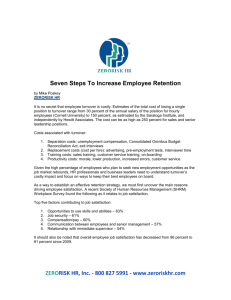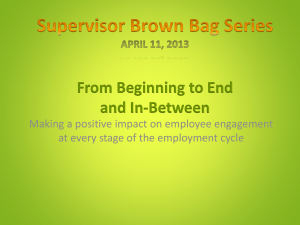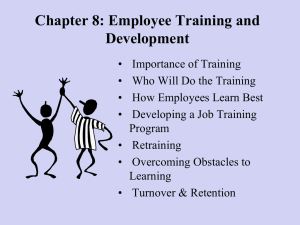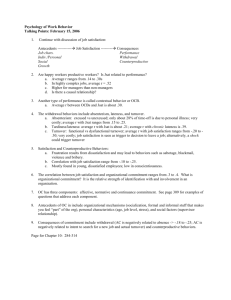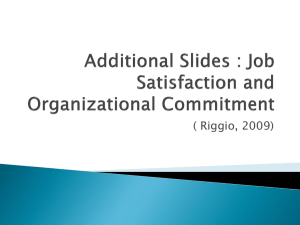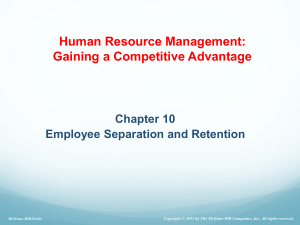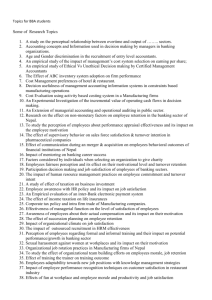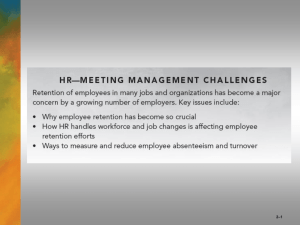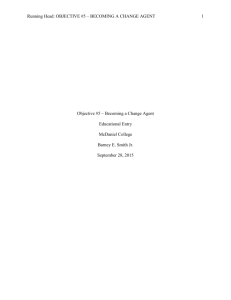Mgmt 340 Spring 2015 Chapter 10 Employee Separation and
advertisement
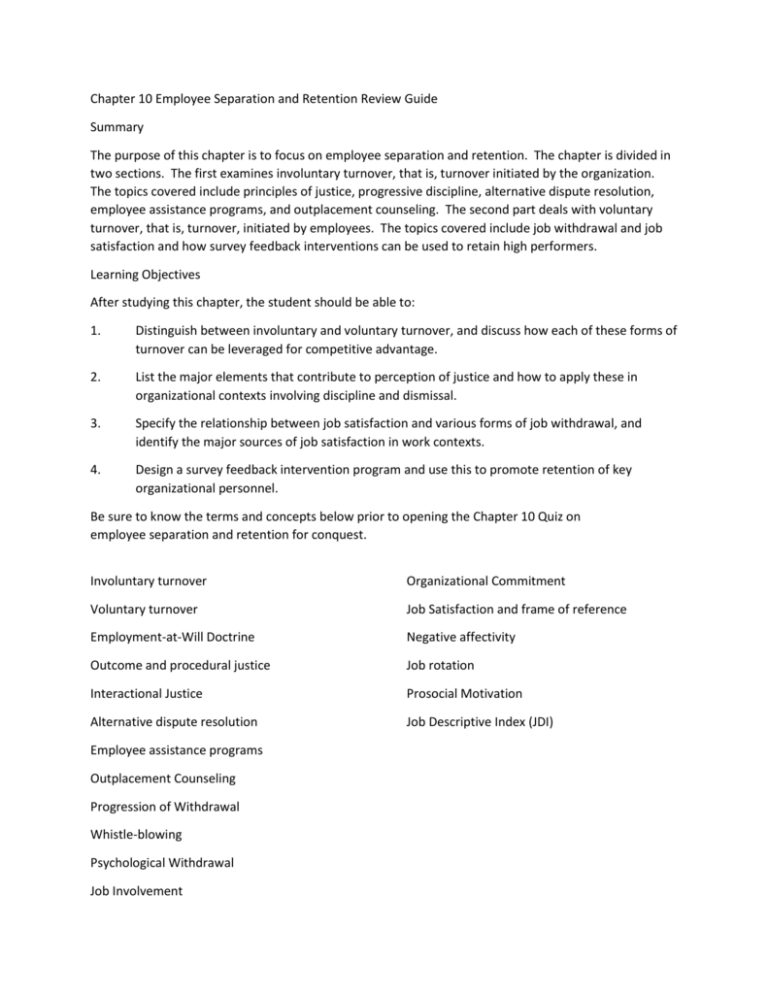
Chapter 10 Employee Separation and Retention Review Guide Summary The purpose of this chapter is to focus on employee separation and retention. The chapter is divided in two sections. The first examines involuntary turnover, that is, turnover initiated by the organization. The topics covered include principles of justice, progressive discipline, alternative dispute resolution, employee assistance programs, and outplacement counseling. The second part deals with voluntary turnover, that is, turnover, initiated by employees. The topics covered include job withdrawal and job satisfaction and how survey feedback interventions can be used to retain high performers. Learning Objectives After studying this chapter, the student should be able to: 1. Distinguish between involuntary and voluntary turnover, and discuss how each of these forms of turnover can be leveraged for competitive advantage. 2. List the major elements that contribute to perception of justice and how to apply these in organizational contexts involving discipline and dismissal. 3. Specify the relationship between job satisfaction and various forms of job withdrawal, and identify the major sources of job satisfaction in work contexts. 4. Design a survey feedback intervention program and use this to promote retention of key organizational personnel. Be sure to know the terms and concepts below prior to opening the Chapter 10 Quiz on employee separation and retention for conquest. Involuntary turnover Organizational Commitment Voluntary turnover Job Satisfaction and frame of reference Employment-at-Will Doctrine Negative affectivity Outcome and procedural justice Job rotation Interactional Justice Prosocial Motivation Alternative dispute resolution Job Descriptive Index (JDI) Employee assistance programs Outplacement Counseling Progression of Withdrawal Whistle-blowing Psychological Withdrawal Job Involvement
